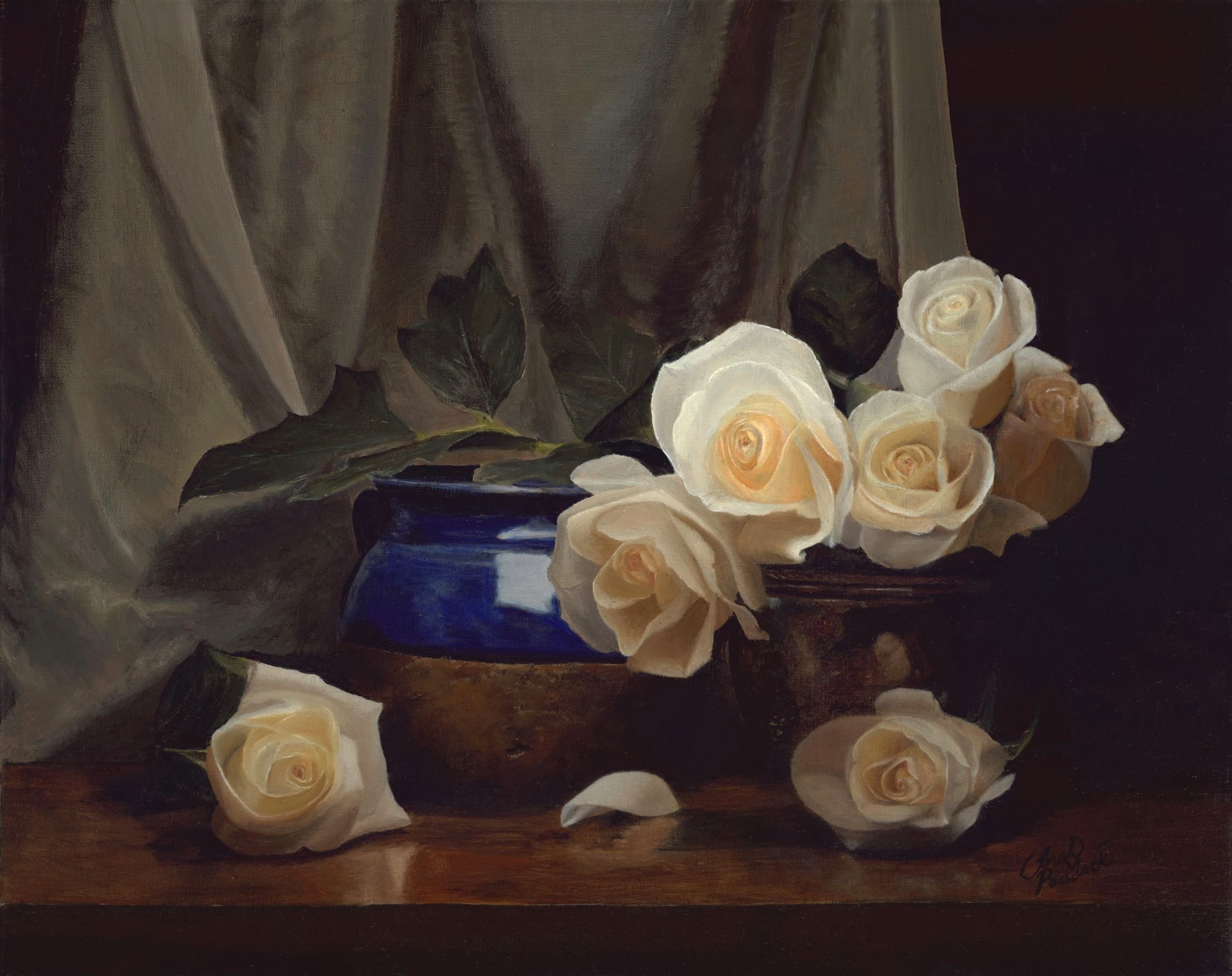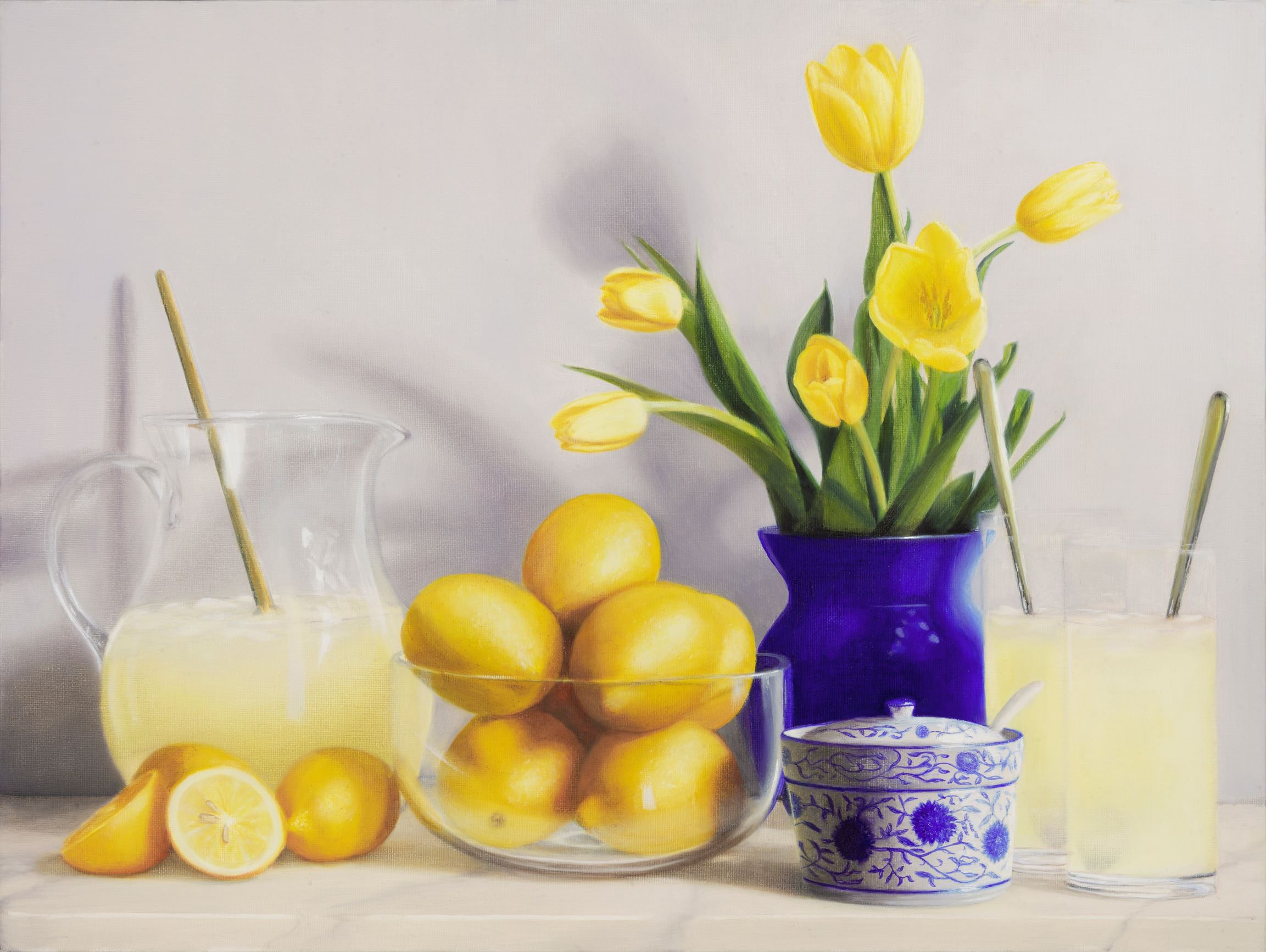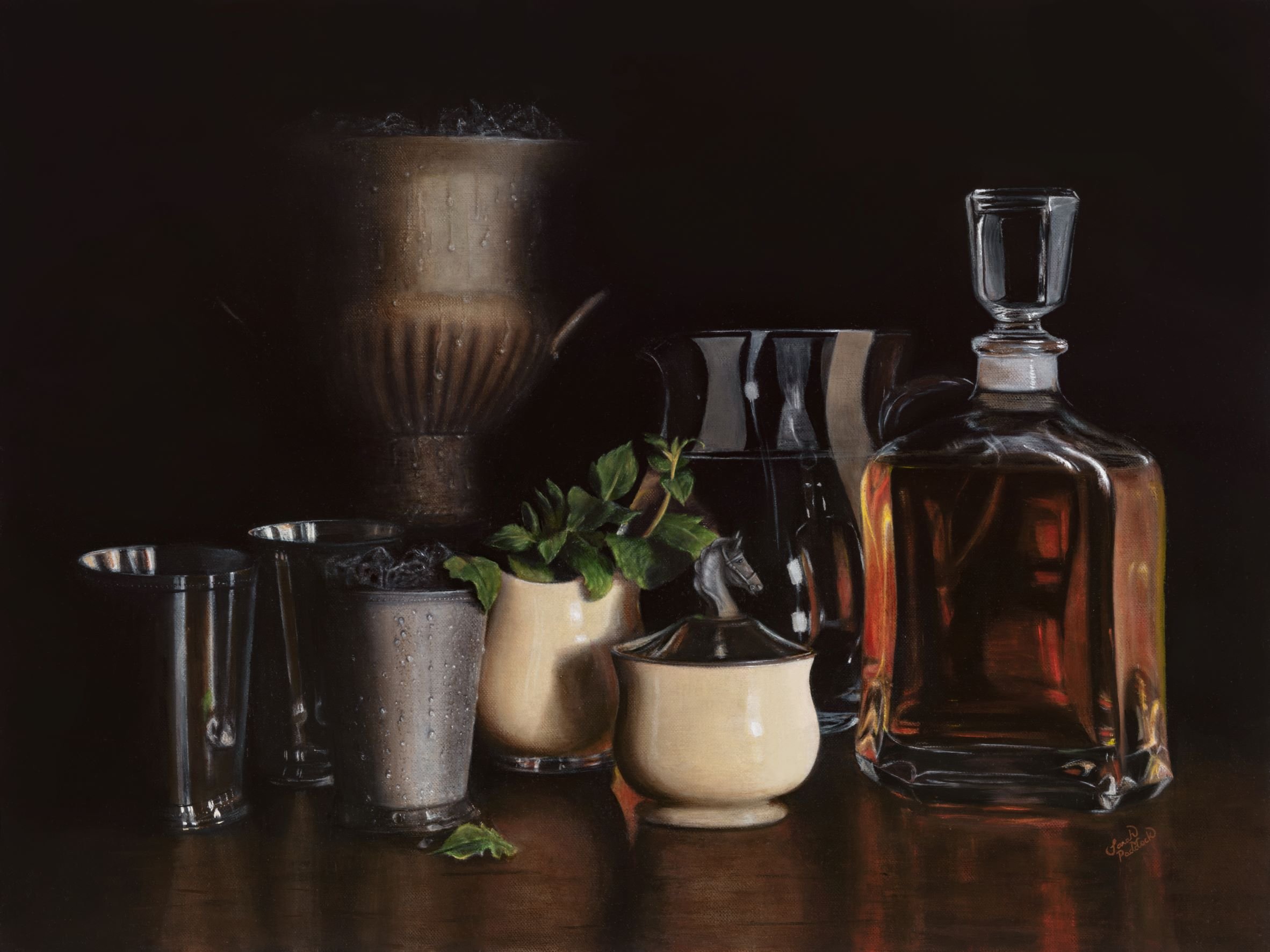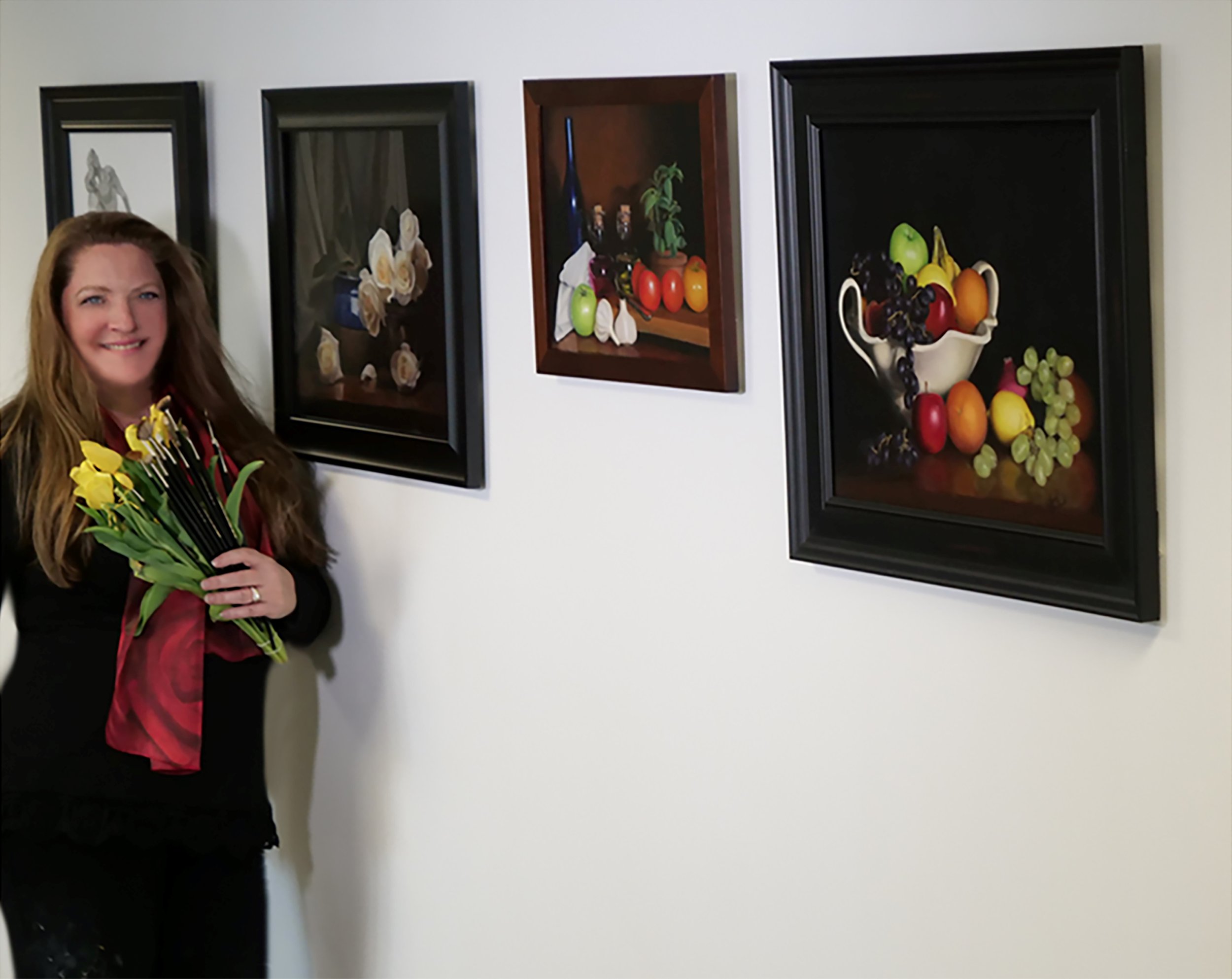Interview
Sarah M. Paddock
New York native Sarah M Paddock paints still life in the tradition of academic realism, giving treasured possessions and everyday objects the prolonged attention that honors their place in a home.
She identifies with artists associated with the contemporary classical art revival, in which the values of technical skill, order, and beauty are paramount. Like them, Sarah has trained rigorously in the technical aspects of painting, studying privately with Patricia Watwood since 2020, embracing visual harmony as an essential and timeless value.
As Zubaran did four centuries ago, Sarah’s method involves carefully arranging ordinary household items and then re-imagining them on canvas.
In the process of painting, Sarah concentrates intensively on surface, light, and the relationship between objects, spending extended time in solitary contemplation and execution. As a former musician, Sarah embraces constant practice, leading to perfect performance.
What is your background and how did you start your journey in the art world?
“I have been a musician since childhood. When I was younger, time and scheduling constraints demanded that I only pursue one art. At that time, I was a talented flutist and knew I would be able to get college scholarships based on my music. I prioritized my musical education over my visual arts and was able to arrange a full scholarship to study at Syracuse University in the College of Visual and Performing Arts.
My first career was as a public school music teacher and band director. This led to being a founder and owner of an early childhood center, which led to a position as Vice President for Finance and Human Resources at a growing company. So for many years, my love of all arts was intermittent and almost craftsy. It wasn’t until 2018 that I picked up a paintbrush. I was so enamored with the feel and the colors that I dedicated myself full-time to my painting. All of my musical training and all my ambition and academic ability are now devoted to, and have found home in, my painting.”
What does your work aim to say? Does it comment on any current social or political issues?
“My still life paintings explore human attachment to ordinary domestic objects, celebrates familial and ancestral connections through belongings, and honors the personal effects we live with and share. My sole social commentary is a reverence for intimate surroundings and the values they imply. We rarely take extraordinary time to truly study and consider all the aspects of these objects: how the light passes through and around them, how they reflect onto each other, though we see them every day.
I always take particular delight in painting heirlooms. Sometimes it’s a simple pot or cup, perhaps a necklace or apron, and sometimes it’s a recipe for the meals we share together. Rarely are these items that are passed from generation to generation the most valuable monetarily, but they are rich in memory and character. These are objects that have been imbued with value and values. To inspect and truly consider the meanings of these as the artifacts of our lives, and to visually and artfully preserve them is thrilling. I think it truly distills and enriches the values we rely on in our daily living.”
Which current art world trends are you following?
“One current trend that I watch, and which is quite prevalent is hyperrealism. It’s heavily, if not exclusively referential of our current state of technology, and the significant technological advances in photography and digital imaging.
I mainly identify with the contemporary realist revival, which follows the classical traditions of painting from the Renaissance to 19th century academic art. My realism has a very human element, focusing on what a personal eye can perceive without enhancement — making it a painterly realism. I’m very true to myself in my painting; very intense and specific and very personal. I want to honor the way we live with a focus on the details viewed and translated through a human artistic process.
While traditional, my work is contemporary in terms of my colors, which are often more modern in contrast and chroma. I really love that my works are very human—traditional, yet contemporary paintings using only Renaissance age technology, depicting the special aspects of rather ordinary living.”
“As a flute player, I followed a score. As a still life painter, I consider the objects I arrange to be my score. Translating them onto canvas is my performance; the result of hours of practice and loving attention.”
Do you plan your work in advance, or is it improvisation?
“Choosing objects and placing them in relationship to each other and light sources is fundamental to my process. Planning a painting can take weeks or even months, with hours to days spent perfecting the setup to ensure each object gets special attention, even in a supporting role, to prompt consideration of each piece.”
What process, materials, techniques, etc., do you use to create your artwork?
“I think through each composition extensively, and often do preliminary sketches and small color studies before starting a larger work. My materials are all super traditional: linen or cotton canvas, artist pigments in oil. I prefer Spike Lavender oil to turpentine. It’s both healthier and even more traditional than petroleum-based thinners. It’s truly the execution of the Renaissance.”
What does your art mean to you?
“I am consumed by the intricacies of realistic painting; the transformation of three-dimensions into two. In particular, I’m absorbed by the depiction of the shape and surfaces of three-dimensional objects, the spaces between them, and the way light is absorbed and reflected by them. My attention to this reflects my love of life and home and family. To me, it really is a celebration of living life in the values that I want to endure and survive.”
What’s your favorite artwork and why?
“My constant inspiration is Baroque still life painting, particularly Michelangelo Merisi da Caravaggio (1571-1610), Clara Peeters (1594-1657?) and the Spanish bodegon tradition exemplified by the work of Francisco de Zubaran (1598-1664). The objects they depict are common rather than lavish, and they reinforce my celebration of living common human experiences through realism.”
Have you had any noteworthy exhibitions you'd like to share?
“I have had a number of exhibitions as listed below:
2022 - Small Works, National Oil and Acrylics Painters’ Society Best of America, Beverly McNeil
Gallery, Birmingham, Alabama.
- Salmagundi Club Spring Auction, New York
- International Guild of Realism, 16th Annual Exhibition, McBride Gallery,
Annapolis, Maryland.
2021 - Chili Art Group, Village Art Gallery, Caledonia, New York.
- National Oil and Acrylics Painters’ Society Best of America 2021
Dana Gallery, Missoula, Montana.
- Oil Painters of America Eastern Regional Juried Exhibition
ArtCenter Manatee, Bradenton, Florida.
- Salmagundi Club Fall Auction, New York.
- Salmagundi Club Small Works Exhibition, New York.
I’m also a Juried Member of Salmagundi Club NYC, National Oil and Acrylic Painters’ Society, International Guild of Realism, Oil Painters of America, and American Women Artists.”









